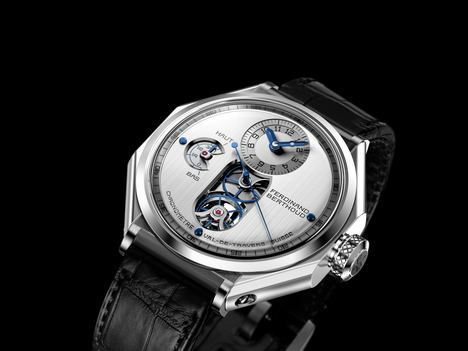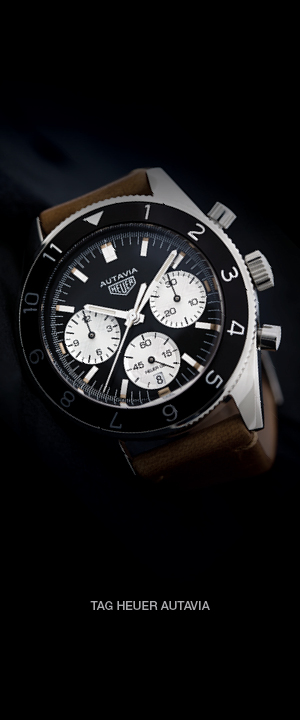
We are fascinated by their intricate function, but our deeper obsession with all things horology is a relationship to form. And beyond those handcrafted shapes and complex details, the choice of material that encases the movement — and in the most luxurious examples form the basis for said movement — and bracelet, and which laces it to our wrist, greatly determine desirability.
Painstakingly crafted analogue timepieces are the most functional adornment you’ll ever wear and as with other jewellery segments, much of the perceived value and joy of ownership lie in the properties of the material used. It comes down to its weight. The lustre. And, perhaps most important of all, longevity and future value. Luxury timepieces are investment items, after all.
When considering splurging on a high-end watch, buyers traditionally distinguish between watches that appear either silver or gold in appearance. The truth is that the metals used by horologists don’t divide quite so neatly between silver and gold, and that leaves enthusiasts to choose from the truly precious, such as platinum, titanium and gold, to an assortment of different steels. All have unique properties that appeal to specific buyers, according to how each metal influences the mass and balance of a watch, the health of its owner and ease of long-term maintenance.
Since ancient traders first kept recorded ledgers, gold has been the metal we associate most consciously with wealth and value. For millennia it has been the hedge against runaway inflation in times of crisis, and as such there’s little surprise that the Swiss watch industry has always used gold liberally as a material of choice for its dearest pieces.

The appeal of gold is that uniquely warm colour, which blends well with olive skin tones, and the malleability of it for shaping a timepiece’s structure. Aside from its aesthetic appeal, gold offers nearly unrivalled durability, it doesn’t oxidise over time and retains its atomic mass. As the king of all yellow metals its special property is an amazing lustre that never fades. Gold’s stability as a material also means that even after two or three decades, a meticulous technician can refurbish your slightly scratched timepiece to brilliant newness in an afternoon.
Unfortunately, that durability does comes at the sacrifice of mass. Gold is dense, which is why it lasts so well over time despite exposure to the elements, but that does make it heavy. Some can find a gold Rolex of generous diameter unexpectedly heavy on the wrist.
If you are after something with a cooler hue and true rarity, try a platinum case. There is a 96 per cent greater availability of mined gold than platinum, and yet the price per ounce of the two metals remain quite similar, yet far fewer watches are made of platinum due to its rarity. Brands celebrated for their preciously low volume production, such as Patek Philippe and F.P. Journe, offer platinum as some of their most exclusive case and bracelet options. Similar in density to gold, there’s a satisfying weight to a platinum timepiece and for most it’s the alternative to gold on a metal colour chart.
“Depeche Mode are iconic in the history of contemporary music... This new and unique collection of 55 different pieces plays tribute to their incredible career while aptly celebrating our common ground.”
What if you seek something that isn’t heavy on the wrist in the manner of gold or platinum? For some, the economy of movement within their wristwatch must be matched by an agility of gesturing when wearing it too. The heft of a gold or platinum timepiece can be tiresome and annoying to slightly built owners. For those ardent followers of horology who desire something with the cool appearance of a precious white metal, without the weight, stainless steel is a choice substitute.
The fallacy would be to assume that because steel is ubiquitous in our lives and abundant in production, it suffers lessened exclusivity. This is certainly not the case. Ulysse Nardin’s beautifully elegant women’s watches are stainless steel, and Paul Newman’s Daytona had enthusiasts agog last year when it set the record for the most expensive wristwatch ever sold — at a whopping $17.75 million.
The immense value of vintage watches, which often sell for just shy of a million dollars, has invigorated the market for stainless steel. Originally a material used due to necessity during the war years, when precious metals were nearly impossible to source, stainless is light and more resilient to scratches. Nearly half of the high-end watches being exported from Geneva are now fabricated from stainless steel, with the cutlery metal rivalling gold as a finish of choice.

If you want an easily wearable, agile watch that will appreciate in value, stainless steel remains en vogue. A cautionary detail is the presence of nickel in its metallurgy, which can cause skin irritations and health issues for some. A solution? Titanium.
A miracle metal of the aviation industry and deeply challenging to machine and shape, titanium is biologically the most inert of all metals, triggering absolutely no allergic reaction. Titanium is distinguished by being darker in colour than other white metals and the lightest of all alloys used.

While watchmakers have taken to alloys for a long time to enhance traditional materials, the biggest shift recently has been to ceramic parts and even full-ceramic cases. Lightweight and durable, this material adds to the longevity of the timepiece in addition to staying cool on the wrist and contributing a luxurious feel to the watch.
Rolex first introduced a ceramic bezel more than a decade ago, but brands such as Hublot with its ceramic gold alloy prove that the possibilities are endless. So maybe instead of choosing between elements we could someday look at customisable watches made up of all of them? But then we might run the risk of falling into the H. Moser Frankenwatch trap…
The Ulysse Nardin Classic Tourbillon Falcon is limited to eight pieces



Discussion